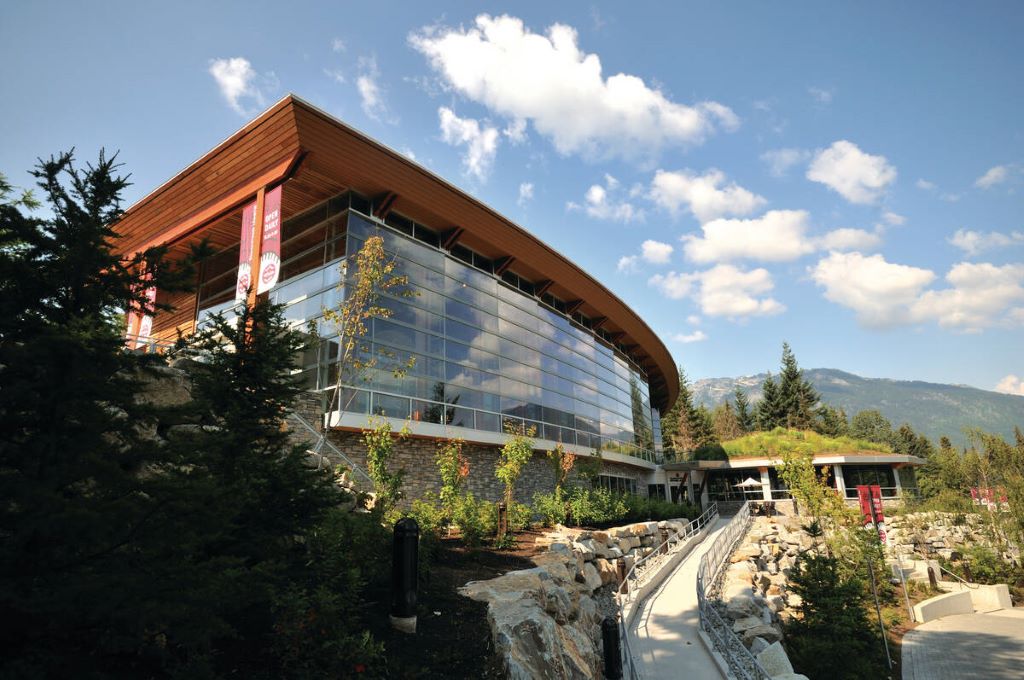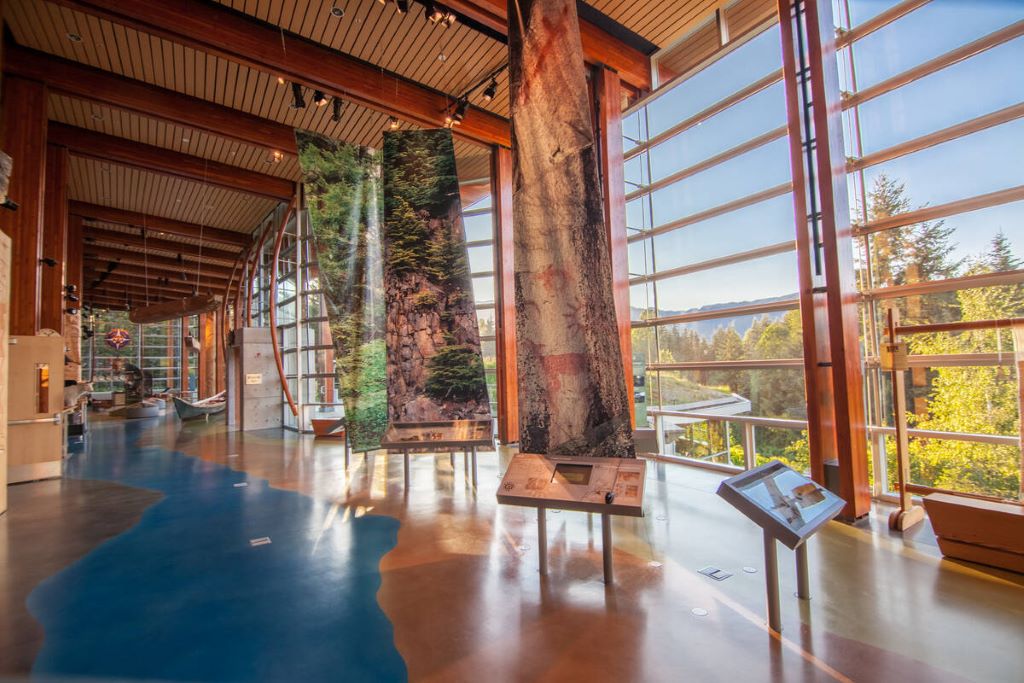
Sea to Sky Highway Signs
Say it in Sḵwx̱wú7mesh: Squamish Culture from Vancouver to Whistler
We’ve all heard the saying, ‘Sometimes it’s more about the journey than the destination’. This is certainly the case when traveling along the Sea to Sky highway that connects Vancouver and Whistler. You’ll notice something unique about the road signs during the journey; city and town names appear in both English and Sḵwx̱wú7mesh (Squamish). But the history, significance, and pronunciation of Squamish Nation places is still a mystery for most travelers. Learn more about the language, culture, and significance behind the Sea to Sky Highway signs to connect closer to the ancestral heritage of the area on an exciting road trip along one of the most scenic highways in BC.
SIGNIFICANCE of Sea to Sky Highway Signs
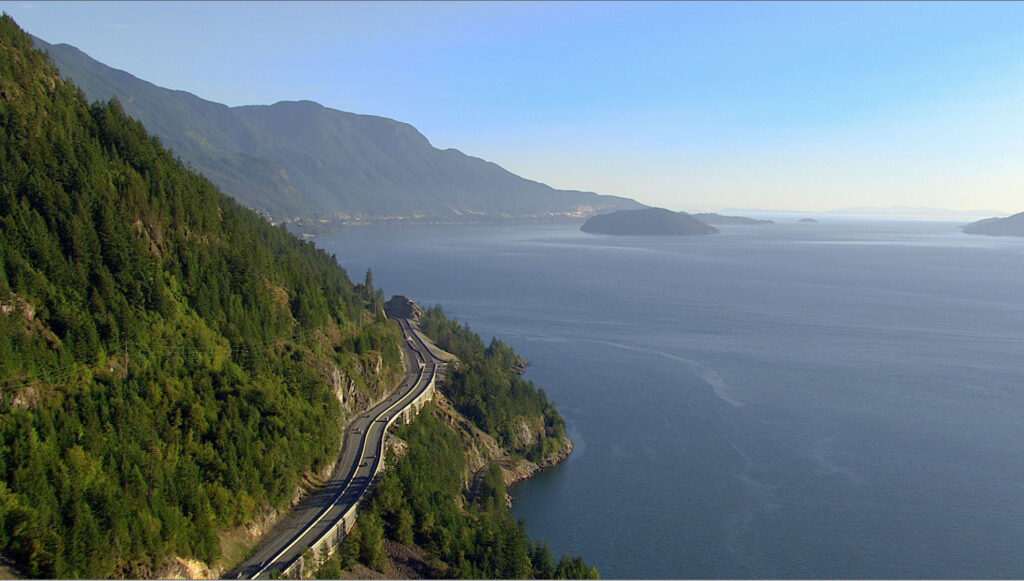
The Sea to Sky highway (Highway 99) starts in West Vancouver, passes through Squamish, and continues all the way to Whistler and beyond to the towns of Pemberton and Mount Currie before ending at Lillooet. The road signs were installed prior to the 2010 Winter Olympics held in Whistler to remind residents and visitors of the rich Indigenous history of the area.
Road Signs in Sḵwx̱wú7mesh
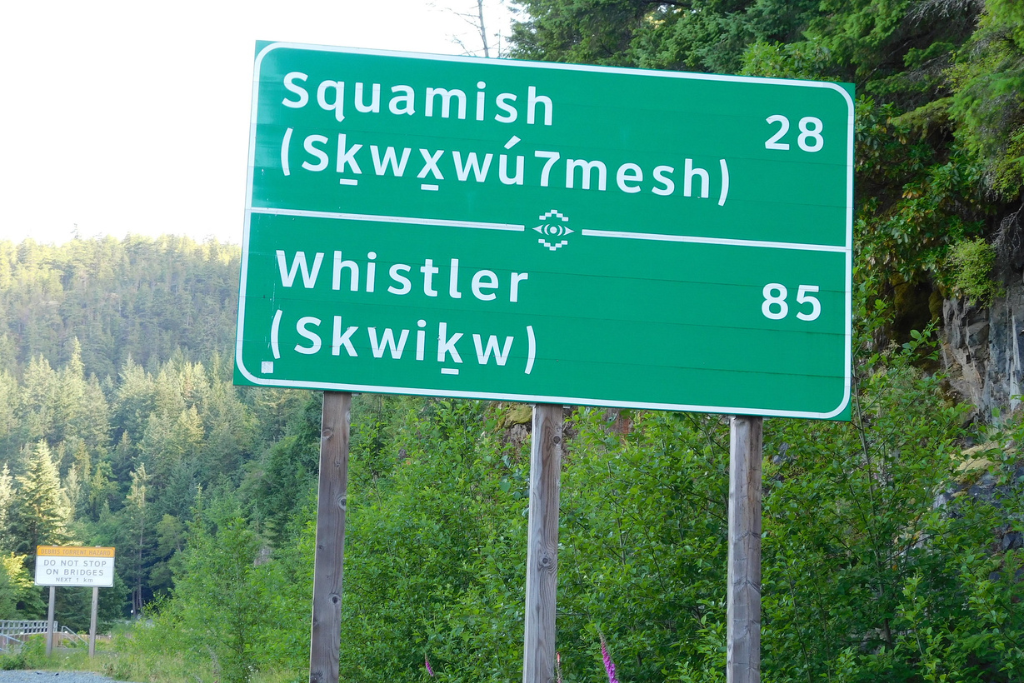
If traveling southbound from Whistler, you will see signs for K’emk’emeláy̓ (Vancouver). Pronounced KEM-kem-a-lie, K’emk’emeláy̓ means ‘the place of many maple trees’. This area was formerly a site for the Sḵwx̱wú7mesh, Selilwitulh (Tsleil-Waututh) and xʷməθkʷəy̓əm (Musqueam) peoples to gather and harvest seafood. The site marked the beginnings of Vancouver as we know it today.
There are several signs along the Sea to Sky highway with both English and Squamish names of places. Learn how to pronounce some of these names in Sḵwx̱wú7mesh with help from Aaron Williams, a Squamish Nation member and project specialist at Squamish Nation Language and Culture Affairs.
- Sḵwiḵw – Whistler
- Ch’iyáḵmesh – Pinecrest
- Sts’áḵ’ay̓s – Callaghan Creek
- Spú7ets’ – Rubble Creek
- Stamsh – Brandywine Creek
- Swá7elt – Widow Creek
- Ch’iyáḵmesh – Cheakamus River
- Sḵwx̱wú7mesh – Squamish
- Mámxwem – Mamquam River
- Saẁá7elt – Stawamus River
- Kwtsá7tsutsin – Olesen Creek
- Kwékwetxwm – Shannon Creek
- Txwn7us – Gonzales Creek
- Shisháyu7ay̓ – Britannia Beach & Britannia Creek
- Xwehúy̓shn – Thistle Creek
- Yiyḵ’m – Daisy Creek
- Ch’ax̱áy̓ – Horseshoe Bay
- Énwilh Spálhx̱n – Furry Creek
- Wéḵw’weḵw’m – South Creek
- Xwáẁchayay – Kallahne Creek
- Lhḵ’etksn – Bertram Creek
- Stl’álḵem Staḵw – Deeks Creek
- Nínich Ḵw’litḵm – Loggers Creek
- Ḵw’pel – M Creek
- Ch’ích’iyúy Elx̱wíḵn – Lions Bay
- K’él’etstn – Magnesia Creek
- P’ap’ḵ’ – Alberta Creek
- Temlh – Larsen Creek
Why there is a 7 in Squamish (Sḵwx̱wú7mesh)
If you are traveling from K’emk’emeláy̓ (Vancouver) to Sḵwiḵw (Whistler), you will notice signs for Sḵwx̱wú7mesh along the way. The “7” symbol in Sḵwx̱wú7mesh acts as a pause in the word, known as a glottal stop in linguistic terms. Learn more about Sḵwx̱wú7mesh village names, how to pronounce them, and their ancestral significance.
Top Stops on the Sea to Sky Highway
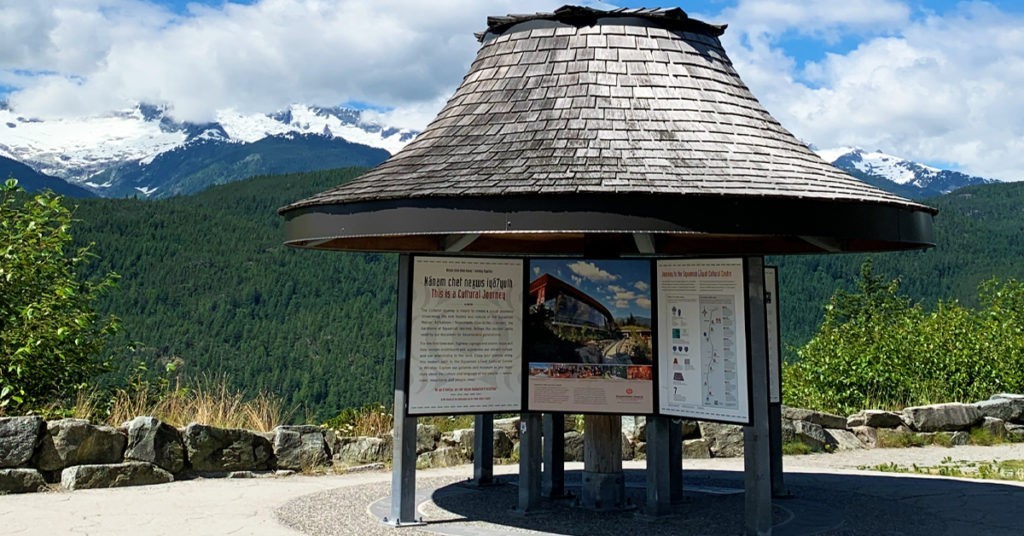
There are several stunning sights along the Sea to Sky highway that are worth the stop, including Porteau Cove, Shannon Falls viewpoint, and Cheakamus Canyon, among others. If you want to experience more than breathtaking ocean views and sweeping mountain vistas, embark on a self-guided cultural journey. Make a pit stop at the 9 interpretive kiosks along the Sea to Sky highway. There are 7 Cultural Journey kiosks northbound from Vancouver to Whistler, and 2 southbound en route to Vancouver. Learn the history and legends of each area and their significance to The Squamish and Lil’wat First Nations who call these lands home.
Experience Indigenous Culture in Whistler
Squamish Lil’wat Cultural Centre
If connecting with the local culture is high on your travel wish list, a stop at the Sḵwx̱wú7mesh Lil̓wat7úl Cultural Centre (SLCC) when in Whistler is a must! This museum features exhibits, tours, workshops and many more unique opportunities to connect closer to the two First Nations communities that share the Whistler lands. Peruse permanent and upcoming exhibits. Taste fresh, traditional bannock at the Thunderbird Café. Visit Whistler’s Largest First Nations Shop and find that perfect piece that will remind you of your visit to Whistler.
audain art museum
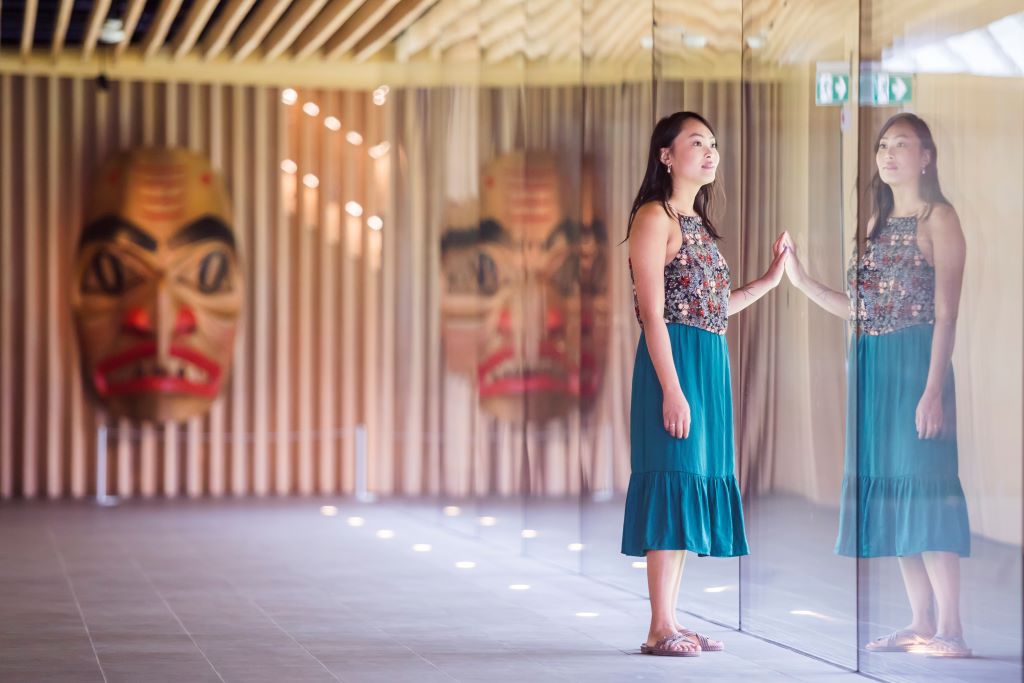
If you’re a visual learner with an affinity for the arts, you’ll love the Indigenous works on display at the Audain Art Museum. The Permanent Collection celebrates BC artists from the late 18th century to the present, including the The Dance Screen (The Scream Too). This red cedar dance screen was finely carved by Haida Chief 7idansuu, an indigenous artist also known as James Hart.
LOCAL TIP
Canada’s National Truth and Reconciliation Day is celebrated on September 30th. Learn more about Indigenous art & culture in Whistler at your leisure, or join a cultural tour with Fairmont’s Whistler Experience Guides. Discover more ways to experience Indigenous Culture in Whistler.

